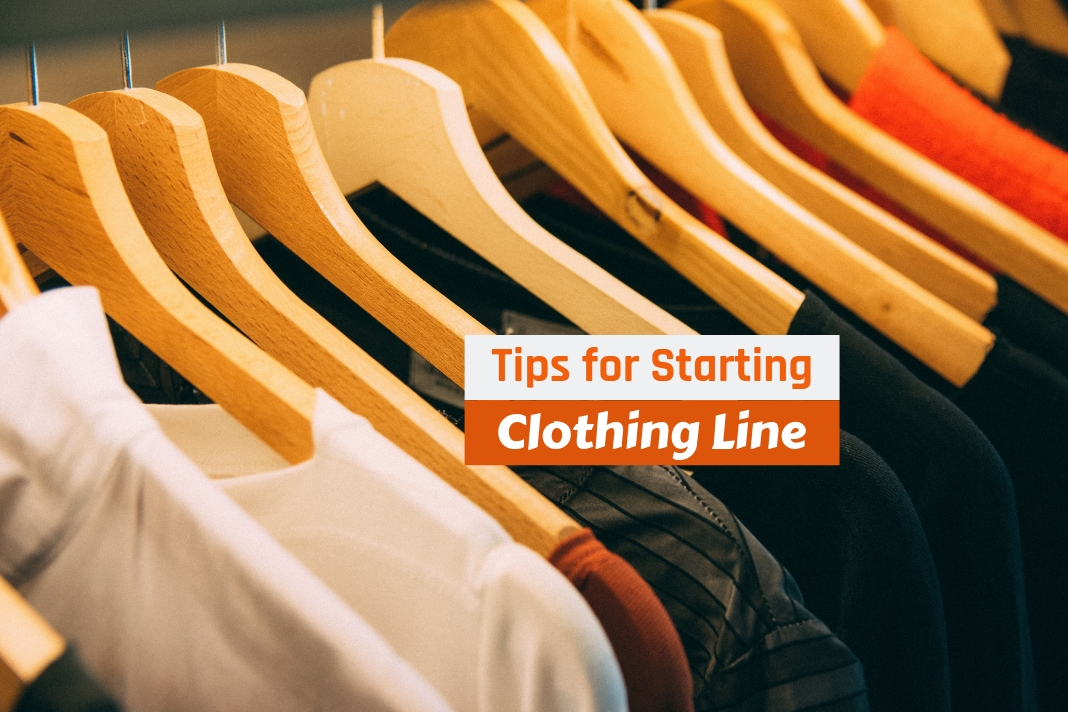
Starting a clothing line is no different from starting any other business – grueling hours, intense grunt work, expensive business plans and so on. However, in the end, when everything starts falling in to place, the satisfaction and contentment it provides will be unparalleled.
Most successful clothing line business starts out of a consumer need and yours might also be. So, always look for opportunities to establish new designs, sizes, and patterns. We have here specially compiled exclusive tips for starting a clothing line that you can consider throughout your business set-up process.
Tips for Starting a Clothing Line Business
These tips are practical pieces of advice. Nevertheless, the most common one that we often shout out is asking to create a to-do list and a business plan. Write down all of the activities, essentials and intricate stuff that you need to tackle when getting started.
Tip 1: You Can Start the Clothing Business with Very Limited Investment
You don’t have to be rich to start a business. You need a) creativity, b) an idea, c) a passion and d) marketing skills. Yes, the only cost that you will regularly incur is photoshoots (which is essential if we must add), but you can also do it in a cost-effective manner. To own your clothing line, you can definitely start with a $40000 to $50000 budget.
Tip 2: Seek Advice from a Fashion Expertise
If you need inspiration, meet and talk to an inspiration. You will need the industry knowledge and the business knowledge before you start developing your clothing line. Make sure the people you meet are all experts, not people who have just started. Experts are more comfortable in giving tips and solutions than beginners and climbers, for the latter tend to hold the best tip to themselves in fear of competition.
One of the greatest and frequent advice we have heard experts giving is developing your own concepts and turning your own ideas into reality.
Tip 3: You Better Have a Basic Degree in Fashion Designing
Well, we aren’t asking you to travel all the way to another country and gain a reputable fashion designing certificate. No, but of course you will need to have a basic understanding of the business, the industry and rest of the things that follow. The fashion world is huge and engulfing, from fabrics and paints to cuts and creases, you need to know about everything. Learning the names of fabrics and knowing how to stitch a straight line should be your priority.
A fashion-designing course will always prove beneficial in several ways, including color coordination, understanding tints, mixing patterns and colors, tailoring and ideating designs.
Tip 4: Start Identifying and Recognizing Your Market
Your product needs a market – not just any market, but a receptive market. You can’t create a demand for chopsticks for Indians who eat roti and paratha. Similarly, you cannot create a demand for something that the market doesn’t like or have in excess. All of the products that we see rise above success is catered to demand from the market.
Researching is the best way to understand what the market currently is looking for and whether you can deliver exactly that or something better. Go through recent trends, join community forums and clothing sites to understand what is coming, from where it is coming and who is accepting it.
Tip 5: Think Hard-core Sales and Think Ahead of It
Make sure you know what kind of sales you would like to venture. Will you want to own an e-commerce website, open a store, or plan for a wholesale business? Based on your answer, decide your pricing structure as well. Moving forward, you will need to discuss your terms with your manufacturers and solidify your pricing structure.
Your overall pricing structure will compile of product sample price, the cost incurred in designing outfits, and wholesale cost. You have to try various pricing mix and come up with a suitable pricing structure.
Tip 6: Secure Start-up Funds
The process of securing start-up funds can be unnerving for a beginner in this unfathomable world. However, today we have several ways to secure start-up funds for a clothing line, such as crowd-funding, taking up a loan, government and many more ideas.
Handling costs on a credit card is also a popular option, although it makes less sense. Credit cost funding is a good solution for those businesses that are seasonal and that rely on their cash flow totally for a certain period in a year.
You can also fund your production through pre-order designs. You can ask your customers to prepay for the outfits and use the money to fund your production unit.
Tip 7: Hire Help and Don’t Be Afraid to Work with Small Teams
You have to try to reduce as much cost as possible for a start-up clothing line. Therefore, hiring a department full of staffs is not a practical option for you. That’s why we ask you to take up a basic degree in fashion designing to be able to grade, fit and do the technical designing aspects all by yourself.
You will have to decide whether you want to apply the drop-shipping technique and go directly with the manufacturer or do the entire process privately with private labeling. However, as and when your business grows, you will have to consider hiring people for three important roles, namely:
- Branding, for marketing your brand to niche customers and to ensure that your website, logo, and marketing strategies are consistent and exceptional. Branding is important for your customers to find you at the right time and right place.
- Accounting: If you aren’t good at handling money, your business wouldn’t survive without a finance person. You need guidance on taxes, returns, budgeting and auditing to make this a hit show.
- Product Management, for helping you with the entire manufacturing process, such as lining, sheets, elastics, POs, delivery date, shipment and distribution of your clothing line.
Don’t be afraid, however, to start with just one or two people. Even two can make a team. Instead of planning it for a long time and waiting for the right people to join you, we suggest that you launch your product right away. Just do your groundwork before that.
Tip 7: Hire Right Manufacturer
Manufacturing the products plays a huge role in determining how well your clothing-line business would perform. Don’t get excited with the first manufacturer you get your hands on. You have to look for several potential factories ahead of time. Meet each one of them personally, make them understand what exactly you are looking for and understand what their process flow and mode of operation are.
You can get hold of a list of manufacturers by getting in touch with a consultant. You will also have to decide whether you want to source your manufacturer in your country or from outside. The materials you want to use and your budget will help you decide this.
Remember that a manufacturer is going exist in your business as long as the business exists. Therefore, building a great relationship and forming a great rapport is very important for long-term cooperation and existence.
Tip 8: Hire Designer As and When Needed
Starting a clothing line business is not making just a dress or two. Once you dive in, you will discover more varieties and types than you can fathom. A designer is very important in the fashion world if you choose not to design your clothes yourself. Top clothing brands usually have two to three designers for different outfits. You will also probably need one as and when you extend your clothing line. Recruit someone who has fresh ideas and has a passion for working in the industry.
Tip 9: Think Like a Business Man/Woman
If you have a business background, kudos to you, but if you do not belong from a business family, we highly recommend you to brush up your business skills. You cannot always think to form a designer’s perspective, which most creative fashion designers tend to do. You have to rather think from a customer’s perspective and take in the entire industry before you launch your clothing line. You have to look at the numbers to find out what products are selling well and what is not.
Based on the figures, you have to build a clothing line that not only is trendy but also quite differently designed. Do ask for help when it comes to business management and business development. Learn from experiences and take advice from veterans.
You may also want to read the success journeys of people from the industry. Learn the tricks and tweaks of converting a start-up business into a profit-earning platform.
Finally, take some time after each process completion to reflect. You have to self-reflect and evaluate your performance from a 360° view. A business is a learning process and you may not ace in the first go. You probably may not know or understand many things. Stop and recognize your weaknesses –which could be anything between designing your clothes and communicating with your staffs and clients – and work on it diligently.
Be prepared to handle any scenario. Wishing you the best of luck. Don’t forget tosh are your first experiences in the fashion world in comments below.




